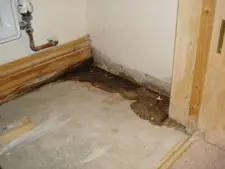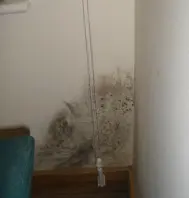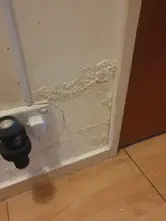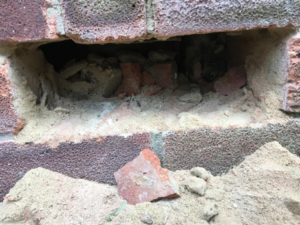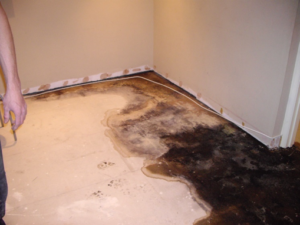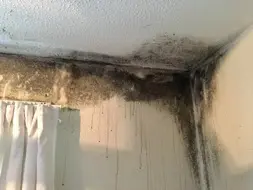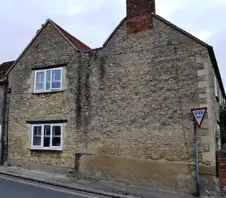Damp Proofing and Damp Control
Specialist damp surveys and damp proofing services
Damp Proofing in Berkshire, Hampshire, Surrey & Oxfordshire
Damp Proofing
Biocraft is a specialist damp proofing and damp control contractor. We offer a range of damp surveys and damp proofing services throughout Berkshire, Hampshire, Surrey and Oxfordshire
To arrange a specialist damp survey or a quotation for remedial or damp proofing works, please call 0118 943 2111 or email info@biocraft.co.uk
Damp proofing Professionals
We’re unique in the way that we offer a full range of building repair and restoration services to detect and combat all forms of dampness in residential and commercial buildings. We’re experienced in working on period and modern properties using the latest techniques for drying and restoration as well as tradition methods of restoration and damp proofing. See below for common damp problems and solutions.
When dampness appears suddenly
Has the problem appeared suddenly and you think you need damp proofing? If so, it’s likely that the dampness is due to a leak from a pipe or escape of water. The source could be from pipework in the floor or from the bath, shower, dishwasher, sink, WC or washing machine.
Check what you can but you may need the help of a plumber or a specialist water leak detection survey to locate the exact source. Once fixed, dry the area and make good, it shoul dnot need damp proofing unless there was a pre-existing dmap problem in that area to start with. Biocraft can carry out water leak detection surveys and water leak restoration works.
Figure 1 – Dampness caused by a leaking pipe
Dampness affecting outside walls and ceilings
If the dampness is affecting outside walls or ceilings and is mainly black mould, it’s likely to be a condensation issue and doesn’t need damp proofing. Condensation is caused by warm, moist air coming into contact with cold surfaces. Solutions include reducing moisture in the air and improving your heating and ventilation systems or insulation. See our section on dealing with condensation here
Figure 2 – Condensation dampness on external wall
Dampness which is high on walls with blistering paint
Is the damp problem high on the wall or ceiling or around doors, windows or the chimney? Does it appear as a stain and/or flaking/blistering paint or plaster? If so, it’s likely to be penetrating dampness.
You should check the roofing, guttering, pointing or brick work, the seals around doors and windows, drip grooves on windowsills. You may need a builder or handyman to carry out repairs to building detail. It’s a good idea to look outside when it is raining heavily to see if there are any problems with leaks or overflow guttering.
Figure 3 – Penetrating dampness
Dampness on the fireplace and chimney breast
If there is dampness on the fireplace and chimney breast, it’s likely due to water ingress, lack of adequate ventilation to the chimney flue or combustion salt contamination.
Check the condition of the chimney, including pots and flashing. If the chimney or part of it isn’t used, it should have a ventilated covered pot and the fireplace should be ventilated to provide air flow up the chimney. Long-term water ingress can cause salt contamination which may need re-plastering after the source of the moisture has been removed and the masonry has had time to dry (6-18 months depending on the thickness of the wall).
Figure 4 – Damp penetration around chimney breast
Dampness in kitchen or bathroom
If the problem is in the kitchen or bathroom and is at low level, it’s highly likely to be a leak or escape of water. This is the most common source of dampness in kitchens and bathrooms. Be aware the source of the moisture may be a little distance from the appearance of the damp, especially if the walls and floors are tiled.
The second most common type of damp in kitchens and bathrooms is condensation and mould. Improvements to heating and ventilation can help to eradicate this.
Figure 5 – Dampness caused to wall from leak in bathroom
Long-term and low-level dampness
If the problem is at low level, is long-term in nature and is very gradually getting worse over time, it may be rising dampness. It could however also be a bridged DPC, lack of subfloor ventilation or a blocked cavity. Rising damp is often misdiagnosed so it’s a good idea to get it looked at by a professional.
Figure 6 – Blocked cavity
Dampness on below ground walls
If the problem is on a wall that’s below ground, such as a basement or semi-basement and there’s black mould, it’s likely a condensation issue due to lack of ventilation and/or heating. If there are no pipes, drains or appliances that could be causing the damp, it’s probably a failure or absence of waterproofing to the walls and floors and you will need specialist advice.
Figure 7 – Failed waterproofing causing dampness to basement floor
Black mould on the edge of bedroom ceiling
If you see black mould on the edges of the ceiling or in squares/rectangles, this can indicate missing loft insulation. Inadequate loft ventilation causes cold bridging which leads to condensation and mould. Refit loft insulation but make sure there is a 25-50mm ventilation gap above the insulation for ventilation.
Figure 8 – Severe condensation and mould caused by cold bridging and lack of ventilation
Dampness in a traditionally built house (pre-1919)
As with all damp issues, it’s essential to make sure the source is correctly diagnosed. Any remedial work should be carried out using compatible material for the type of building being worked on. Using sand and cement renders, plasters and pointing on a lime-built building for example, can lead to serious problems in the future. Biocraft can advise on dampness in traditionally built buildings and structures.
Figure 9 – Cement plinth and poor maintenance causing dampness to period property
Get in touch with us
For further information get in touch with Biocraft:
More Info
- Damp Proofing
- Common Causes of Dampness in Buildings
- Common Causes of Dampness in Buildings
- Specialist Damp Surveys
- Basement Information
- Rising Dampness
- Chemical Damp Proofing
- Penetrating Dampness
- Top Tips for Dealing with Damp
- Woodworm & Dry Rot Treatment
- Damp Proofing in Newbury
- Damp Proofing throughout the Thames Valley
- Cost of damp proofing
Dampness and damp proofing in buildings
Moisture can enter the fabric of a building, leading to dampness. There are a number of causes of this including building defects, poor maintenance, lack of effective damp proofing measures and inappropriate/incompatible repairs.
Movement of moisture or the presence of excessive amounts of moisture in building materials can result in salt staining, plaster deterioration or spoiling of decorations. These issues can lead people to seek damp proofing advice or damp proofing works. Timbers that are subjected to continual dampness are at risk from wood-destroying fungi (wet and dry rot). Prolonged exposure to excessive levels of moisture/humidity can result in severe damage to the property and present unhealthy living conditions.
It’s important to determine the source of water/moisture ingress before taking any remedial damp proofing action. There may be one or more sources of moisture ingress such as penetrating damp, plumbing leaks, building defects, condensation, bridging of the damp proof course (dpc) or absence of effective damp proofing, resulting in rising damp.
Valuation and building surveys will frequently identify the need for damp proofing in properties and recommend a specialist damp proofing survey be carried out by a PCA approved damp proofing company.
Damp Proofing Specialists
The possible source(s) and recommend corrective action will be identified by the specialist damp survey. The repairs may include repairing external/internal defects, and reducing external ground levels to below the level of the damp proof course. In addition to installing French drains, improving heating and ventilation or installing a chemical damp proof course and damp proofing.
Consideration must be given to the age and construction of the property as a solution that damp proofing works on a modern building will not be appropriate for a period property and vice versa.
Specialist damp surveys should be carried out by a qualified damp proofing surveyor with a minimum of a CSRT (certificated surveyor in remedial treatments) or CSDB (Certified Surveyor of Dampness in Buildings) qualification. This is required by the Property Care Association (PCA). Biocraft surveyors are qualified with CSRT, CSDB and CSSW qualifications to carry out damp surveys.
Call our damp proofing experts to arrange a specialist damp survey or consultation in Berkshire, Hampshire, Surrey or Oxfordshire. Please phone 0118 943 2111 or email info@biocraft.co.uk and a member of the team will be more than happy to help.
